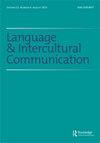Technology as a Method of Teaching and Learning Foreign Languages
IF 2.2
1区 文学
0 LANGUAGE & LINGUISTICS
引用次数: 0
Abstract
Technology is by far an inseparable tool to foreign language learning. Computer assistance language learning, (CALL) presented in the sixties was only the beginning of a new era in foreign language learning, to be ensued by information and communication technology (ICT) in the form of e-learning and the Internet in the recent decades. This paper aims at investigating how commonly is technology used in the foreign language classes in Albanian education system and what English language teachers (ELT) state about digitalisation effect in the learning environment and the students` performance according to personal experience. By using “ Eight Questions to Ask Yourself”, (Hockly N., 2011b) questionnaire adopted into test mode, comprising eight items to respond in a Likert scale, coded from 1-6, it resulted that the vast majority of ELT (91-95%) state that digitalization is time and effort effective and it facilitates the lesson presentation and is a crucial tool to enhance the foreign language environment. 42 % of ELT have a range of tools and repertoire of techniques to draw on and only 33 % design effective task types for the tool. They rely on internet application as a resource in foreign language classes. However they consider that technology is both stimulating and distracting to students, who are reportedly digital natives.技术作为外语教学的一种方法
到目前为止,技术是外语学习不可分割的工具。60年代出现的计算机辅助语言学习(CALL)只是外语学习新时代的开始,随后是近几十年以电子学习和互联网形式出现的信息和通信技术(ICT)。本文旨在调查技术在阿尔巴尼亚教育系统外语课堂中的普遍使用情况,以及英语教师根据个人经验对学习环境中的数字化效果和学生表现的看法。通过使用“问自己8个问题”(Hockly N., 2011b)问卷进行测试模式,该问卷由8个项目组成,以李克特量表进行回答,从1-6编码,结果表明绝大多数(91-95%)的ELT表示数字化是有效的时间和精力,它促进了课程的呈现,是增强外语环境的重要工具。42%的英语教学有一系列工具和技术可供借鉴,只有33%的教学设计了有效的任务类型。他们把网络应用作为外语教学的资源。然而,他们认为科技对学生来说既刺激又分散注意力,据报道,学生是数字原住民。
本文章由计算机程序翻译,如有差异,请以英文原文为准。
求助全文
约1分钟内获得全文
求助全文
来源期刊

Language and Intercultural Communication
Multiple-
CiteScore
3.00
自引率
47.40%
发文量
50
期刊介绍:
Language & Intercultural Communication promotes an interdisciplinary understanding of the interplay between language and intercultural communication. It therefore welcomes research into intercultural communication, particularly where it explores the importance of linguistic aspects; and research into language, especially the learning of foreign languages, where it explores the importance of intercultural perspectives. The journal is alert to the implications for education, especially higher education, and for language learning and teaching. It is also receptive to research on the frontiers between languages and cultures, and on the implications of linguistic and intercultural issues for the world of work.
 求助内容:
求助内容: 应助结果提醒方式:
应助结果提醒方式:


